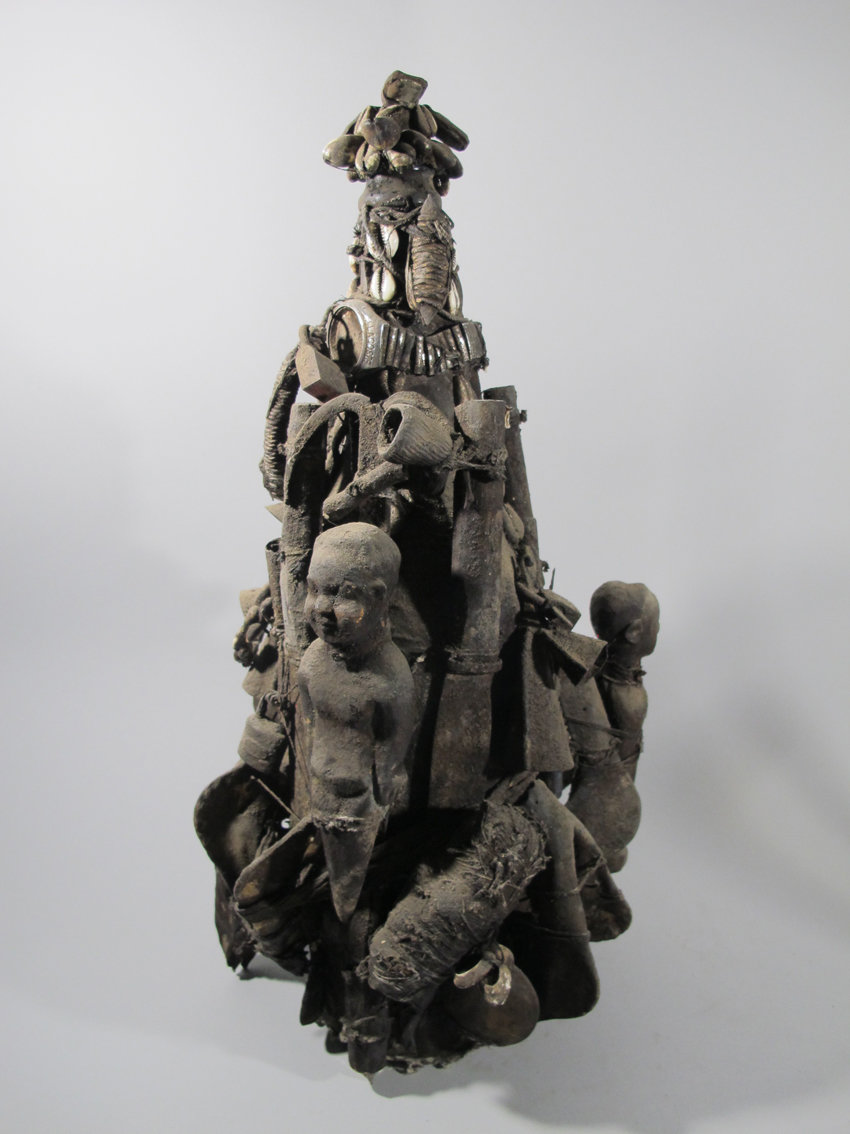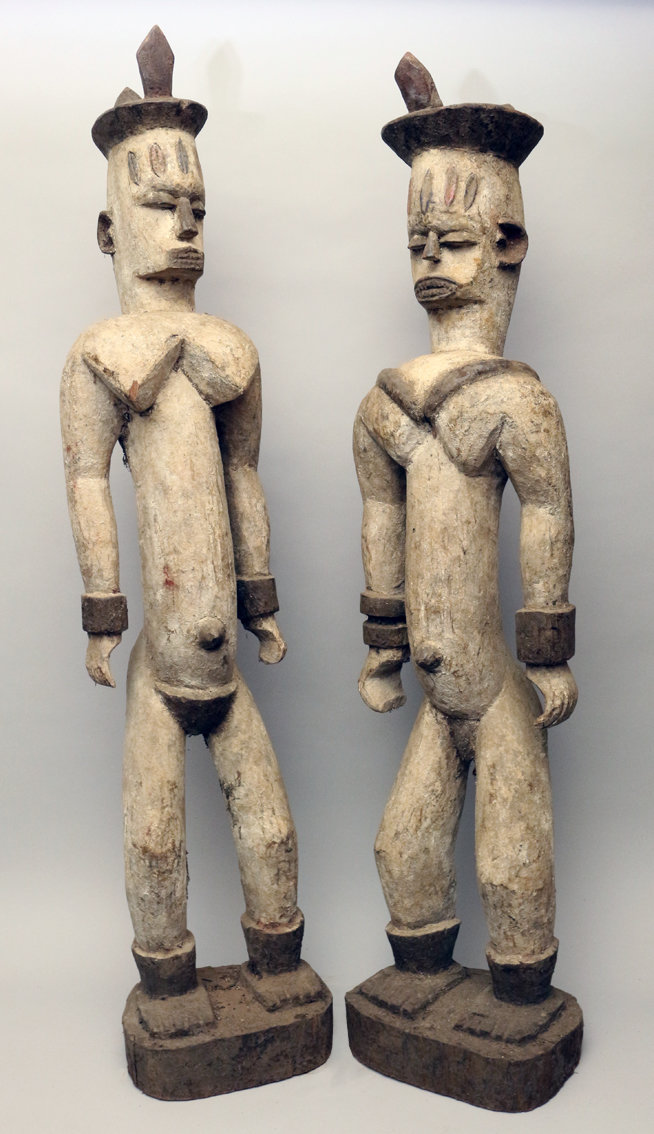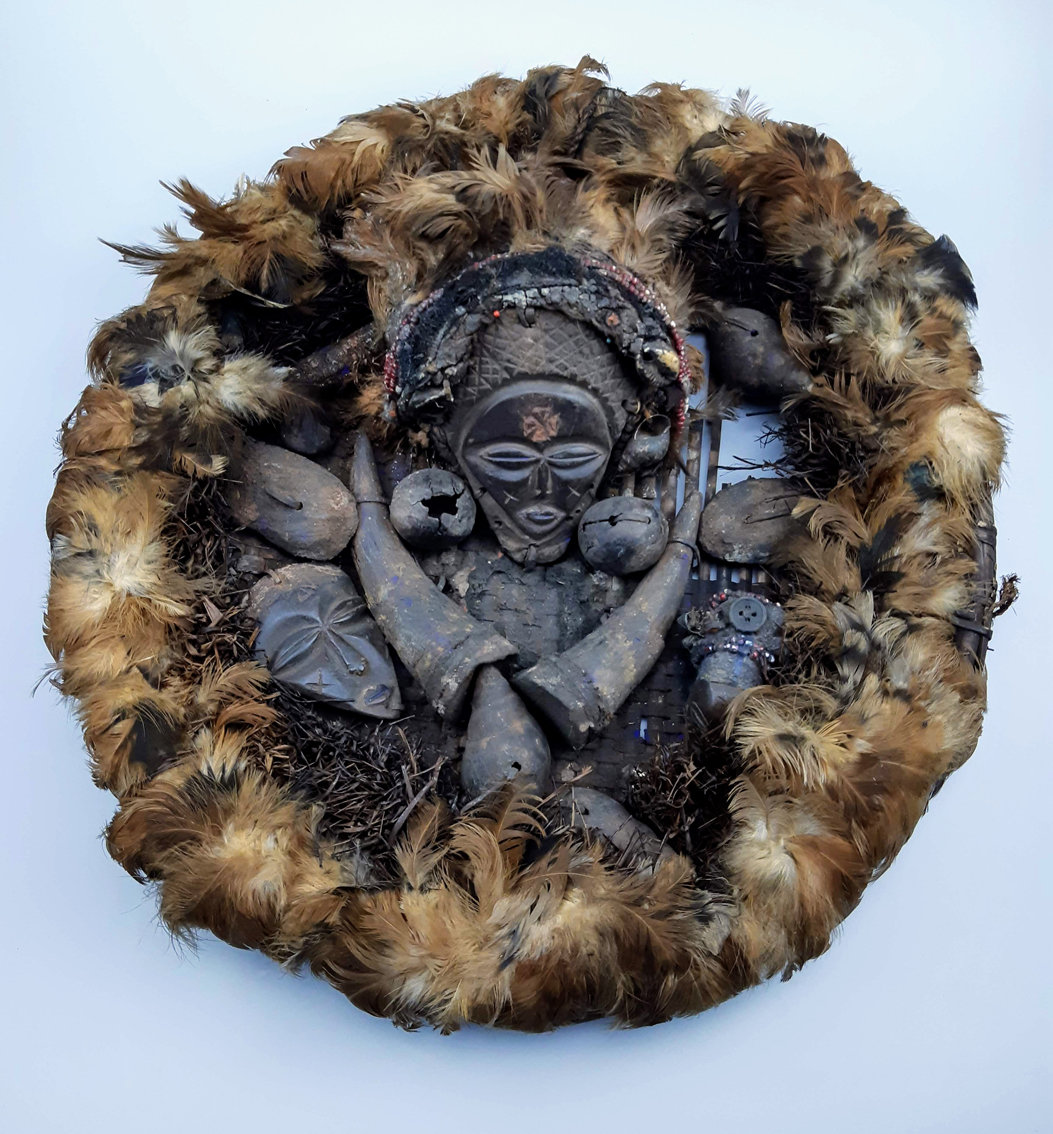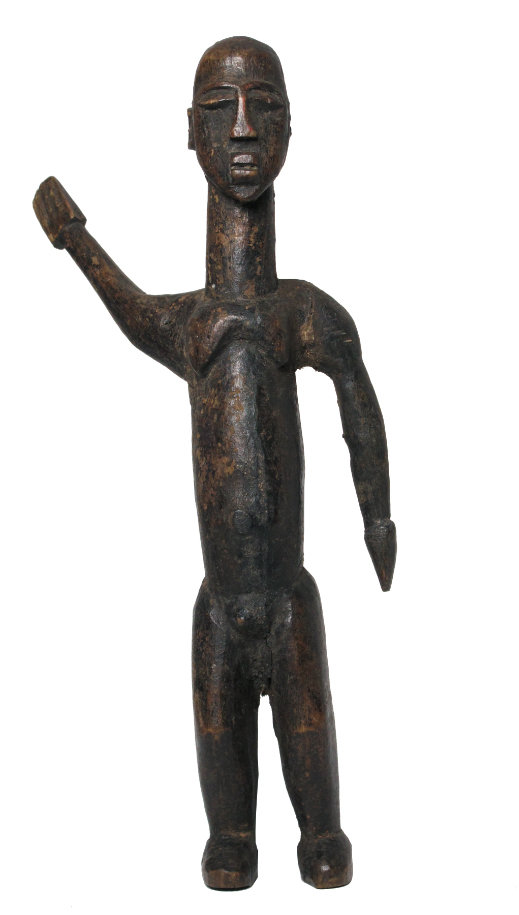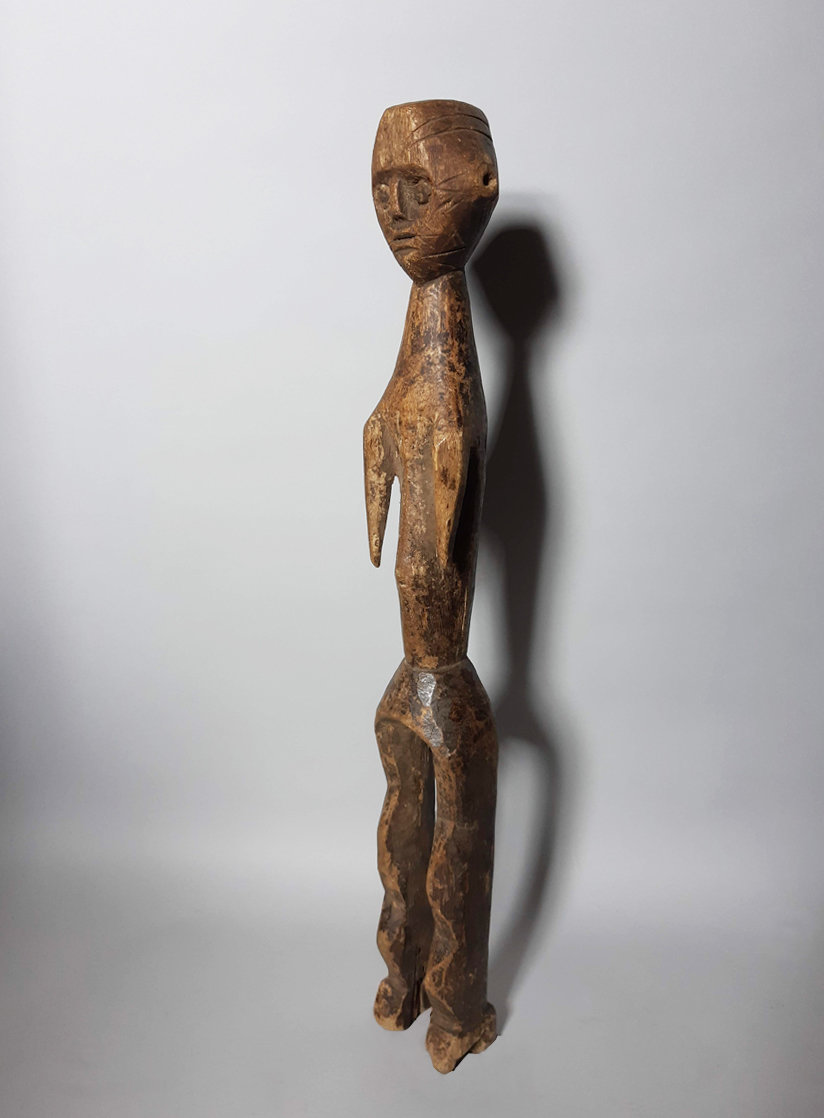-
Quick View€1,800.00
-
Quick View€2,500.00
-
Quick View€3,100.00
Ancient anthropomorphic bellows surmounted by an ovoid head in which the orbits are devoid of eyeballs. The brow bones are underlined by a fine incision in the wood, the prognathic mouth is in pout. The object being laid flat, the rear surface has characteristic erosions. According to an ancestral technique, these fire bellows maintained the fire permanently for a few days. The apprentice blacksmiths were introduced by the ancients to the sexual symbolism of the forge bellows. An eroded patina confirms its frequent use.
-
Quick View€2,600.00
République Démocratique du Congo, Chokwé
Les Tchokwés sont un peuple bantou d’Afrique centrale et australe, surtout présent en République démocratique du Congo et en Angola, et à un moindre degré en Zambie. Quelques milliers vivent aussi en Namibie.
***
Democratic Republic of Congo, Chokwe
The Chokwe are a Bantu people from central and southern Africa, especially in the Democratic Republic of the Congo and Angola, and to a lesser extent in Zambia. A few thousand also live in Namibia.
***
Demokratische Republik Kongo, Chokwe
Die Chokwe sind ein Bantu-Volk aus dem zentralen und südlichen Afrika, insbesondere in der Demokratischen Republik Kongo und Angola, und in geringerem Maße auch in Sambia. Ein paar Tausend leben auch in Namibia. -
Quick View
Bateba statuette of the Lobi people, Burkina Faso
The Lobi live in southwestern Burkina Faso and northern Côte d’Ivoire and Ghana. they are extremely resistant to any form of centralized political authority. Instead their communities are based on the laws of God. The central figure in each Lobi community is the religious specialist named the Thildar. this soothsayer is responsible for communicating with the spirits that govern the community and protecting members of each family from accidents, illness, violence and all the multiple threats people encounter in the hostile environment of West Africa . The carved Lobi represent the spirits of nature they called Thil. Each of these figures displays different gestures or postures, some of them can have two or even three heads, some female figures carry a baby under the arm. These unique characteristics represent the particular talent or power of the spiritual being they embody. A figure raising an arm places a roadblock at the entrance of the malicious spirits at the family home.
H. 25cm. Male character whose pose reflects the Lobi aesthetic in its quality criteria. Standing, the right arm raised back, the left arm stretched out along the body. The forehead is high, the flat nose triangular and the male torso well pronounced. Sex and navel are prominent. The muscular legs have powerfully shaped calves. Hard and dense wood, very nice patina of use.
***
Bateba statuette of the Lobi people, Burkina Faso.
H. 25cm. Male character whose pose reflects the aesthetic Lobi in its quality criteria. Standing, the right brad raised back, the left arm at a distance stretched along the body. The forehead is high, the triangular flat nose and the pronounced male torso. Sex and navel are prominent. The muscular legs have powerful patterned knobs. Hard and dense wood, very beautiful patina of use.
***
Bateba Statuette der Lobi Leute, Burkina Faso.
H. 25cm. Männlicher Charakter, dessen Haltung den ästhetischen Lobi in seinen Qualitätskriterien widerspiegelt. Der rechte Brad hob sich zurück, der linke Arm streckte sich in einiger Entfernung über den Körper. Die Stirn ist hoch, die dreieckige flache Nase und der ausgeprägte männliche Torso. Sex und Nabel sind prominent. Die muskulösen Beine haben kräftige gemusterte Knöpfe. Hartes und dichtes Holz, sehr schöne Patina.
-
Quick View€2,200.00
Recently added item(s)
